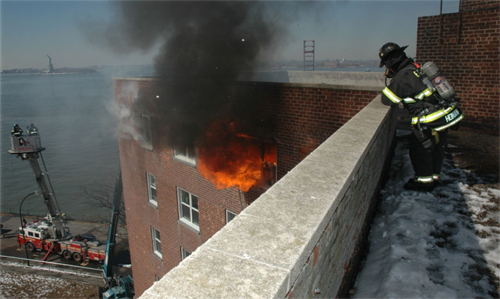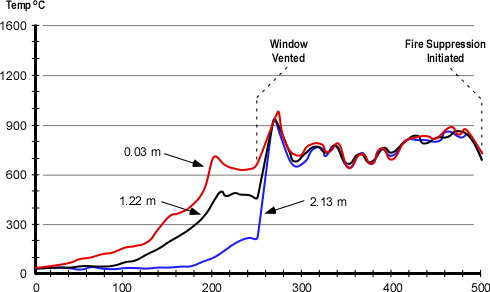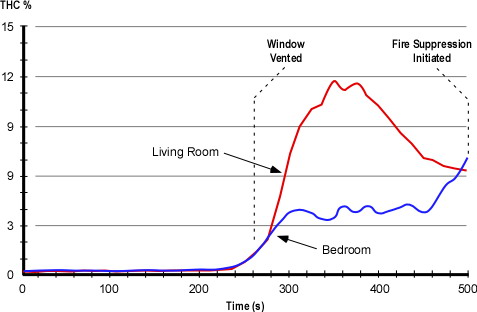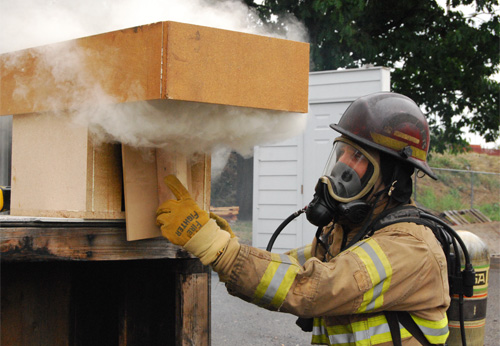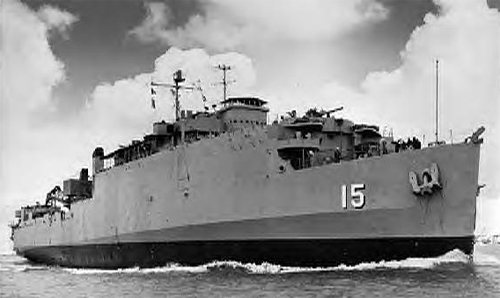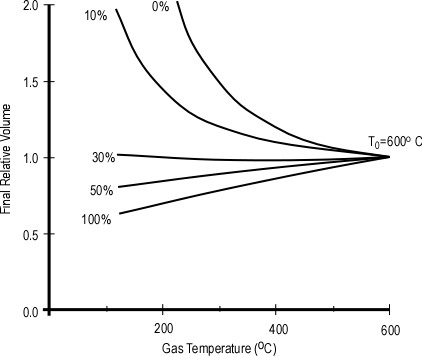Live Fire Training Fatalities
Thursday, June 4th, 2009Most of the provisions outlined in National Fire Protection Association (NFPA) 1403 Standard on Live Fire Training Evolutions, deal with mitigating the risk of traumatic injury or fatality. The standard addresses training prerequisites, but does not speak to medical and physical capacity prerequisites. The standard does specify that:
- The instructor-in-charge is responsible for provision of rest, and rehabilitation (inclusive of medical evaluation)
- Emergency medical services must be available on-site, and
- The instructor-in-charge is responsible for overall fireground activiey to ensure correct [emphasis added] levels of safety.
While the emphasis on live fire training safety has been placed on traumatic injuries and fatalities, this is not the predominant cause of live fire training line of duty deaths. Between 1994 and 2003, 65% of live fire training related fatalities resulted from physiological stress and heart attack (Grimwood, Hartin, McDonough, & Raffel, 2005)

NIOSH recently released Death in the Line of Duty Reports 2008-30 and 2008-36, both of which examined incidents in which firefighters lost their lives during or immediately after live fire training. It is easy to glance at these reports and think that this is just another heart attack with the same recommendations as all the other report. However, I encourage you to stop, read these two reports, and give some thought to what this information means to you on a personal level.
NIOSH Report 2008-30
On August 9, 2008; Captain Sean Whiten (Age 47) was leading a team of students during live fire training in a purpose built burn building. After completing an interior attack, Captain Whiten complained of being tired but otherwise had no complaints. Medical evaluation conducted as part of the rehabilitation process showed elevated pulse and blood pressure, but this was consistent with participation in a strenuous training activity.
After rehab, Captain Whiten was relaxing by his vehicle when he went into cardiac arrest. Instructors and students began CPR and applied a automatic external defibrillator prior to the arrival of an advanced life support ambulance. Paramedics initiated advanced live support procedures and transported Captain Whiten to the hospital where resuscitation efforts continued until he was pronounced dead by the attending physician.
An autopsy conducted by a forensic pathologist discovered that Captain Whiten suffered from coronary artery disease and had ventricular hypertrophy (LVH) and cardiomegaly, conditions which increase the risk of sudden cardiac death. The Captain also had mild elevation of his carboxyhemoglobin (COHb) level, but it is unclear if this had any influence on his heart attack and sudden cardiac death. The Captain’s risk factors for CAD included male gender, age over 45, high blood cholesterol, and obesity. However, he had been cleared by his primary care physician to engage in a fire department physical ability test.
NIOSH Report 2008-36
On July 6, 2008 Firefighter Rufus Brinson (Age 50) was teaching a class involving live fire training at a local community college. After several evolutions under high ambient temperature 34.4o C (94o F) and high relative humidity (58%), including a search drill conducted using hot smoke in a purpose built burn building, Firefighter Brinson indicated that he was not feeling well and took a break in the air conditioned cab of the engine. Another instructor took over teaching for the next evolution while Firefighter Brinson operated the pump. While refilling the apparatus tank after the final evolution, he collapsed next to the apparatus.
An instructor initiated CPR and requested an ambulance. The ambulance was staffed with intermediate level emergency medical technicians who requested response of a paramedic level unit. Transport was initiated prior to the arrival of paramedics who met the ambulance enroute to the hospital and initiated advanced life support procedures. Resuscitation efforts continued at the hospital until Firefighter Brinson was pronounced dead by the attending physician.
An autopsy conducted by the medical examiner listed congestive heart failure as the cause of death and severe coronary atherosclerotic disease and hypertensive heart disease as contributing factors. Firefighter Brinson was also found to have left ventricular hypertrophy (LVH) and cardiomegaly. Risk factors for CAD included male gender, age over 45, smoking, overweight (but not obese), and limited aerobic exercise. Firefighter Brinson had not had a medical exam by a physician in seven years.
Common NIOSH Recommendations
While both of these reports contains unique recommendations based on the circumstances involved, there are also several common recommendations:
Provide pre-placement and annual medical evaluations to fire fighters consistent with National Fire Protection Association (NFPA) 1582, Standard on Comprehensive Occupational Medical Program for Fire Departments, to determine their medical ability to perform duties without presenting a significant risk to the safety and health of themselves or others.
Incorporate exercise stress tests following standard medical guidelines into a Fire Department medical evaluation program.
Ensure fire fighters are cleared for return to duty by a physician knowledgeable about the physical demands of fire fighting, the personal protective equipment used by fire fighters, and the various components of NFPA 1582.
Phase in a comprehensive wellness and fitness program for fire fighters to reduce risk factors for cardiovascular disease and improve cardiovascular capacity.
Perform an annual physical performance (physical ability) evaluation to ensure fire fighters are physically capable of performing the essential job tasks of structural fire fighting.
Provide fire fighters with medical clearance to wear a self-contained breathing apparatus (SCBA) as part of a Fire Department medical evaluation program.
These recommendations are no surprise. It is commonly known that firefighting is a physiologically stressful activity and that working in a high ambient temperature environment increases that stress substantially. Firefighters must be well and fit in order to safely and effectively operate in realistic training and on the fireground.
Responsibility
Who is responsible for ensuring that firefighters are medically and physically capable of engaging in firefighting operations? On one hand, you can make a reasonable argument that it is the fire department’s (employer’s) responsibility. One of the foundations of occupational safety and health regulation is the employer’s responsibility to provide a place of employment which is free from recognized hazards that are causing or likely to cause death or serious physical harm. However, is this solely the employer’s responsibility?
In examining this issue, I will put things in a personal context. I am a male, over 50, have a family history of heart disease, and last ago was diagnosed with hyperlipidemia (high cholesterol). While not grossly overweight, over the last 10 or 12 years my body mass index had crept up and outside the optimum. In addition, my work schedule and graduate studies had negatively impacted my workout schedule and reduced my aerobic exercise considerably. When I had my annual medical physical as a hazmat technician, the occupational medicine physician indicated that I should talk with my primary care physician about my cholesterol level lose some weight, and get more aerobic exercise. Several weeks later, I sat with my dad (a retired fire chief) as he died from congestive heart failure (at age 92). He had retired due to a heart attack the year I started my fire service career. The time that I spent with him over the last week of his life gave me a great deal to think about.
While my employer should (and does) provide medical physicals, respirator qualification, physical ability assessment, and the facilities and time to work out, I am the one responsible for action. Since last summer, I have lost 15.9 kg (35 pounds), substantially improved my aerobic fitness, and reduced my cholesterol to near optimal level. While I had not noticed the degradation in my physical capacity (other than to figure that I was getting old), I have noticed a significant improvement. I feel better on a day-to-day basis and find myself less fatigued when delivering live fire training.
Fire service organizations have a responsibility to their members to provide medical/physical assessment and wellness/fitness programs. However, each of us also has a responsibility to ensure that we are medically and physically qualified for the work we are doing. Take care of yourself and look out for the people you work with!
References
National Fire Protection Association (NFPA). (2007). Standard on live fire training evolutions. Quincy, MA: Author.
National Institute for Occupational Safety and Health (NIOSH). (2008). Death in the line of duty (Report Number 2008-30). Retrieved June 4, 2009, from http://www.cdc.gov/niosh/fire/pdfs/face200830.pdf
National Institute for Occupational Safety and Health (NIOSH). (2008). Death in the line of duty (Report Number 2008-36). Retrieved June 4, 2009, from http://www.cdc.gov/niosh/fire/pdfs/face200836.pdf
Grimwood, P., Hartin, E., McDonough, J., & Raffel, S. (2005). 3D firefighting: Training, techniques, and tactics. Stillwater, OK: Fire Protection Publications.



